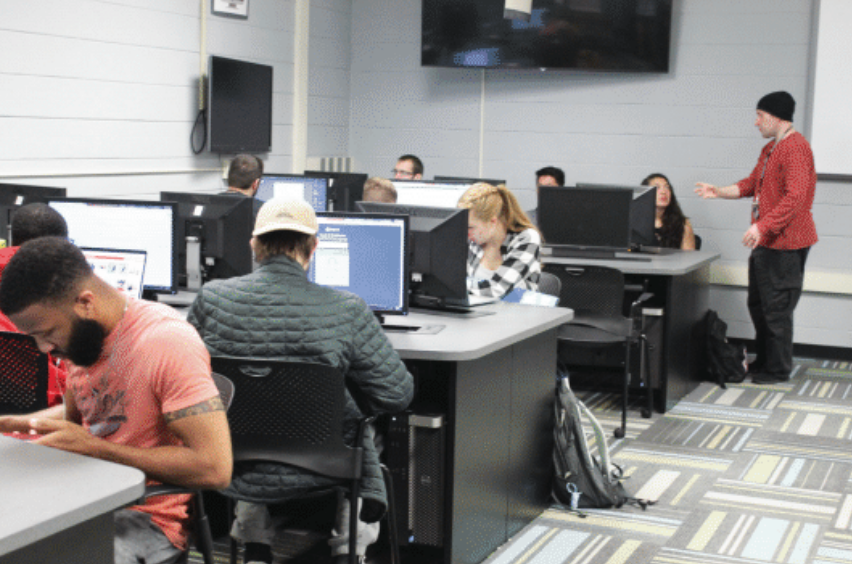
Ayanna Totten
Staff Writer
Starting in the fall, ESU’s Future Teacher Bridge Program will recruit more students of color to pursue careers in education.
Spearheaded by Dr. Terry Barry, dean of the college of education, the program is the result of Barry’s long-term conversations with high school superintendents about diversifying the workforce.
“I think this program has the capacity to make a difference,” said Dr. Barry, who has 32 years of experience in education.
The Future Teacher Bridge Program will invite 10 high school juniors and seniors to take ESU’s Introduction to
Students will be exposed to early childhood education,
Each of the districts that ESU has established partnerships with, Stroudsburg, East Stroudsburg, Pocono Mountain, Bethlehem
Two students are selected by the principal and superintendent in every district. In order to qualify for the program, candidates must be recommended by school administration and have at least a 3.0 GPA.
In a meeting with Dr. Noe Ortega, deputy secretary of education, Dr. Barry explained that the Future Teacher Bridge Program can’t succeed without state funds, which he hopes will cover a portion of students’ tuition as well.
Though he couldn’t provide an estimated cost, he said the salary and benefits of the faculty teaching the courses are factors to consider.
According to Dr. Barry, only 6 percent of Pennsylvania’s teachers are people of color, and the student population is drastically higher.
That 6 percent is concentrated in cities, such as Harrisburg, Pittsburgh
“[The Future Teacher Bridge Program] doesn’t have to be restricted to students of color, but certainly that should be the emphasis,” said Dr. Barry. “I think up until now, we, meaning education, in the Commonwealth have not been very strategic about this goal.”
Dr. Beth Rajan Sockman, professor of professional and secondary education, explained that students are more likely to succeed if they have a teacher that looks like them.
Self-determination theory states that human beings need three things to be intrinsically motivated: relatedness, autonomy
Relatedness in particular demonstrates why having models in the classroom is crucial to the learning process. People are a group species, and they need something or someone to relate to. When students are being taught by someone they feel understands them, it can be very beneficial.
Senior Shavonne McLamb, a secondary education major, agreed that hiring educators of color is crucial to promoting diversity in the classroom.
Ideally, Dr. Barry would like the introductory teaching classes to be taught at district high schools and seamlessly transfer to any university within the state system, not just ESU.
The hope is that students who participate in the Future Teacher Bridge Program will stay in the community to teach, but overall, teachers of color are needed in all subjects nationwide.
When reflecting on his passion for the Future Teacher Bridge Program, Dr. Barry recalled his high school days. Along with its faculty, the high school he attended was predominantly white.
“Occasionally, there would be a student of color move in, and there was nobody on the faculty level who looked like that student,” said Dr. Barry. “And I put myself in that student’s shoes. Coming in, you just want to make friends, you want to assimilate, you want to succeed, but you have one additional hurdle other people don’t have.”
Comparing his efforts to salmon hatcheries in Juneau, Alaska, Dr. Barry explained that the Future Teacher Bridge Program focuses on setting up strategic pathways rather than “widening the net” to find more teachers of color.
Establishing relationships with local school districts allows ESU to start home, recruit students while they’re still in high school and introduce them to education earlier.
Email Ayanna at:
atotten@live.esu.edu

